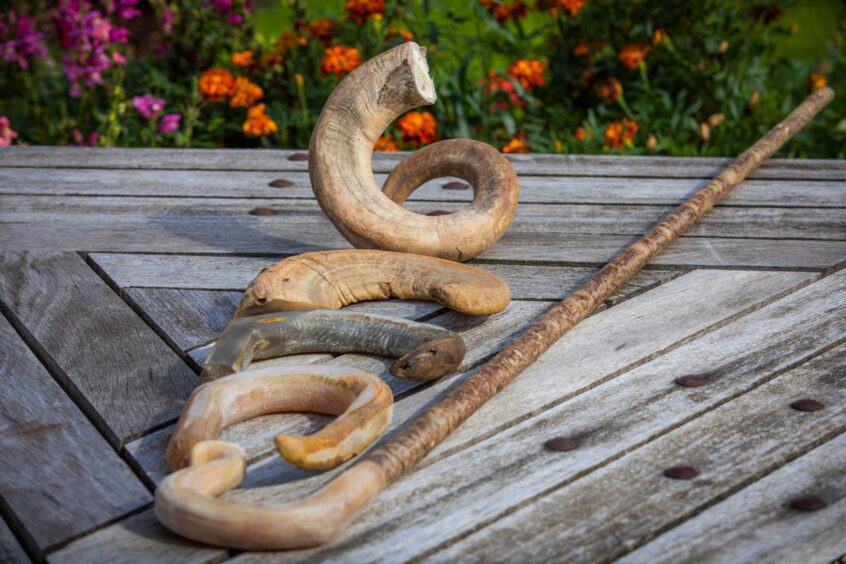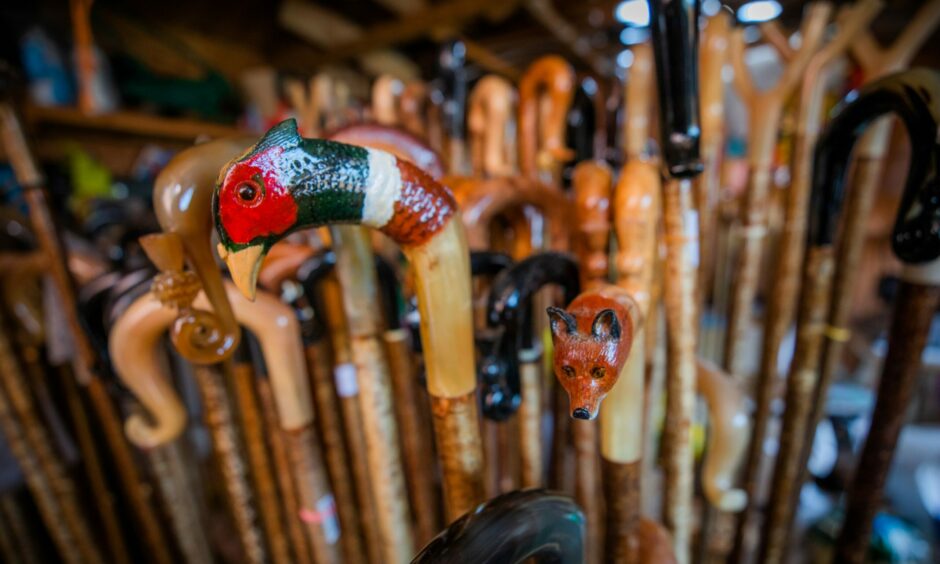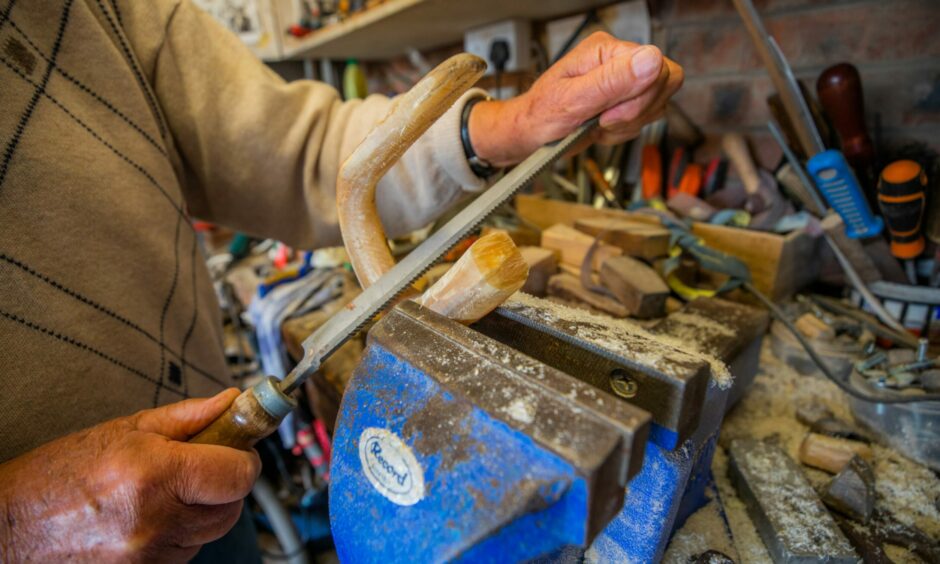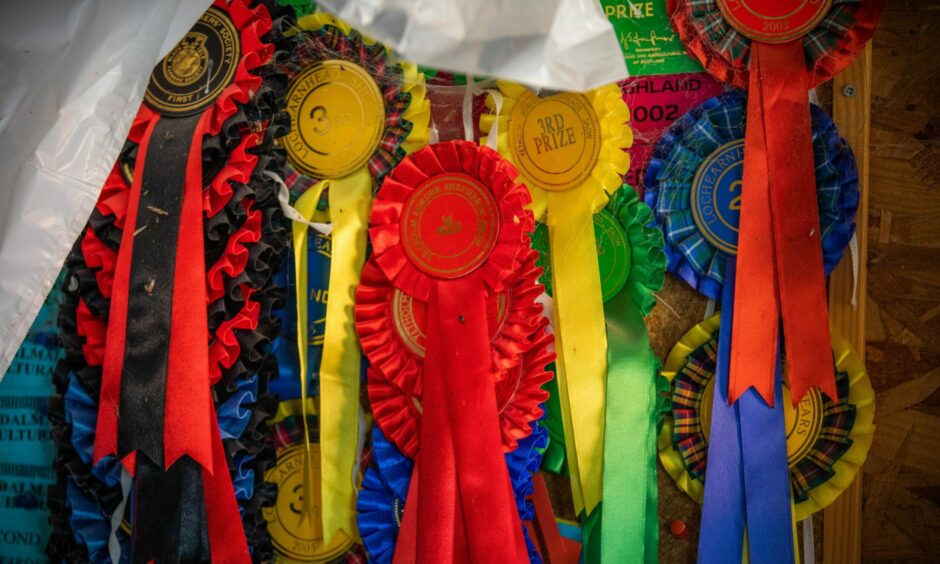Retired agricultural officer, Arthur Dent, has lost count of the amount of shepherd’s crooks he has made.
The craftsman, who grew up on a farm in Northumberland before moving to Scotland for his studies and then his work, has been making crooks for the past 30 years.
From traditional crooks with a curved handle for catching sheep, to more quirky sticks featuring a carved sheep’s head, dog, pheasant, or tractor, Mr Dent takes great pride in each of the sticks he makes and his handiwork can be seen in the hands of farmers the length and breadth of the country.
In his job, Mr Dent visited a lot of hill farms and he often saw horns lying around the fank.
“I asked the farmers what they were doing with them and if offered, took them and that’s how my hobby started,” said Mr Dent.
“In exchange, I would make a stick for them.”
The majority of the horns Mr Dent works with are from Blackface sheep, although he also handles horns from buffalo, Highland cattle and Welsh Mountain sheep as well as antlers.
“A good horn isn’t always obvious,” said Mr Dent.
“I remember once working on seven horns before eventually getting one to make a decent stick.”
The shanks are mainly from Hazel trees – harvested each year by Mr Dent and his wife Joan, before being left to season for a year and then worked on.
The process starts by sourcing a horn, which is boiled for approximately one hour to soften before being flattened in a 20-tonne hydraulic press.
Mr Dent then sets about getting the horn into the right shape – a laborious process involving various steel blocks with moulded shapes which are used to hold the horn under another 20-tonne press, or clamp, and manipulated into the desired shape.
Once the horn has been shaped into the appropriate curve with a straight “heel”, it is drilled and a steel pin is glued into it.
The shank often has to be straightened – a process involving heating where the bend is and gently pulling the stick, while in a vice, to take the bend out.
The horn head is then screwed on to the shank and Mr Dent works away – shaving or cutting – until the horn and shank are flush with each other.
He then increases the circumference of the hole in the shank so that the horn’s pin can easily slide in and out before filling the hole with epoxy adhesive to hold the stick head and shank together.
Elastic cords and string are used to hold the joint together until the adhesive sets – usually overnight.
Using files and various types of sandpaper, Mr Dent then files the horn down so it is the same circumference as the shank.
Any lettering or designs, such as feathers on a bird, are engraved on to the horn using a pyrograph machine and the crook is then painted, if necessary, and given a few coats of varnish before going off to its new owner.
Mr Dent’s craftsmanship has won him various awards at local shows, as well as winning the Royal Highland Show one year, and his sticks have gone as far afield as Australia, Norway, Switzerland and the USA.
“A stick is something that’s never going to go out of fashion,” said Mr Dent.
“The uses you get from a stick are numerous – it’s like a third leg.”
He admits the process of making a stick, or repairing one as he is often asked to do, isn’t easy but it’s something he enjoys doing and at some point every day you will find him in his workshop.
“I get a lot of satisfaction when I make a stick I am really pleased with,” said Mr Dent.
“I have also met a lot of great people since I started stick making; it’s a great hobby.”



